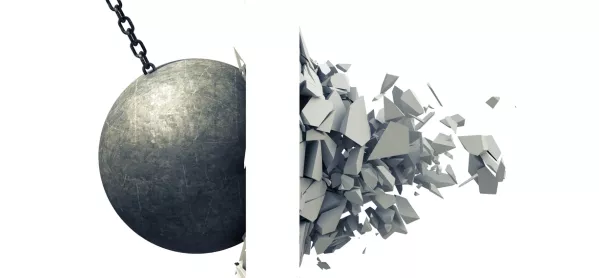- Home
- A teacher’s mission is to destroy barriers to equality
A teacher’s mission is to destroy barriers to equality

“Never let a serious crisis go to waste: it’s an opportunity to do things you think you could not do before.”
These are the now-famous words of Rahm Emanuel, the former mayor of Chicago, uttered long before Covid struck.
For all the pain and struggle that the pandemic has brought to us, it is true that it’s also given us the opportunity to refocus on some of the bigger questions about life - and therefore about education for life. It has called on us to re-evaluate. It has summoned us to search for deeper answers. It has invited us to reset, rather than simply to reopen.
No one wants to go back to the way things were in 2019. We know that what we’d got used to calling normal was never good enough: not in general, and not in terms of education. Instead, it was scarred with deep inequalities, as well as unwelcome and unnecessary pressures created on both school students and staff.
Instead, we want every child’s voice to be heard and valued in the classroom. We want each child’s learning to be properly supported.
An opportunity to eradicate disadvantage
We need to get ourselves off the exam treadmill, to give more attention to student and staff wellbeing. Covid has made it even clearer that academic ability is not enough. To flourish, children need a balance of knowledge, wellbeing, problem solving and creativity: the human skills that we all know matter most through life.
We want opportunity to be fairly distributed. We want the gap between privilege and disadvantage to be eradicated.
We need a new approach to the curriculum, to pedagogy, to leadership and to leadership training - which means rethinking the micromanagement that characterises so many schools.
And we want to create racial equity and justice across education and educational leadership, working hard to tackle the closed doors, walls and barriers that are created by structural racism and white supremacy.
Structural racism and inequality
We all know that black Caribbean and mixed white and black Caribbean students perform very poorly at GCSE, and are almost three times more likely than white British students to be permanently excluded from mainstream school.
We know that 51 per cent of children in the youth custodial system are from black, Asian and minority-ethnic groups - not only a huge overrepresentation when compared with the estimated 13 per cent of the general population from a BAME background, but an increase of 23 percentage points since 2009-2010.
We know that the vast majority of those who serve a youth custodial sentence will get caught in a lifelong cycle of marginalisation and reoffending.
We know that black leaders make up only 1 per cent of all senior leadership posts in education.
So, what can we do?
Kickstarting the revolution
Racism is hard to talk about. It is awkward. It is uncomfortable for everyone. And the use of the term “white supremacy” feels judgemental, and therefore easily draws out emotional rather than rational reactions.
But that’s structural racism: the complex mix of factors that blinds us to the deeply embedded institutional practices and policies that perpetuate white privilege, while at the same time making us feel judged as individuals, whenever the subject is raised.
“The philosophy of the schoolroom in one generation will be the philosophy of government in the next,” Abraham Lincoln said.
That means that education and educationalists have a vital, society-shaping role to play. Education exists to open doors of opportunity where they have remained firmly shut - even bolted. Rightly understood, our mission is to destroy any barrier that stands in the way of equality and access.
In the future, outstanding education will be measured in terms of long-term destinations, rather than exam results. But, in the present, we have the opportunity to dismantle structural racism and create an antiracist approach within our schools. We can build leadership structures that are truly inclusive. We can create pathways of progression for BAME children, beyond education. We can kickstart the revolution.
It was Gloria Watkins, social activist, author and former professor of African-American studies at Yale University - much better known by her pen name, bell hooks - who wrote: “What we cannot imagine cannot come into being.”
She is, of course, right. Put differently, in words from the perennial Christmas film, The Santa Clause: “Seeing isn’t believing; believing is seeing.”
And perhaps that’s the key: imagination. Given the opportunity to reset rather than simply reopen, to move on from the old suboptimal normal, we have the opportunity - and, I believe, the responsibility - to break the cycle. We have the opportunity to ask again what a great education - an education for all, an education for life - really looks like.
Steve Chalke is the funder and leader of Oasis Charitable Trust.
On Saturday 7 November, 10am-1pm, the Break the Cycle movement, hosted by Oasis and sponsored by Tes, is live streaming ‘‘What we cannot imagine cannot come into being: eradicating racism and white supremacy in education and society”. Tickets are free, and can be booked through Eventbrite here
Keep reading for just £1 per month
You've reached your limit of free articles this month. Subscribe for £1 per month for three months and get:
- Unlimited access to all Tes magazine content
- Exclusive subscriber-only stories
- Award-winning email newsletters



